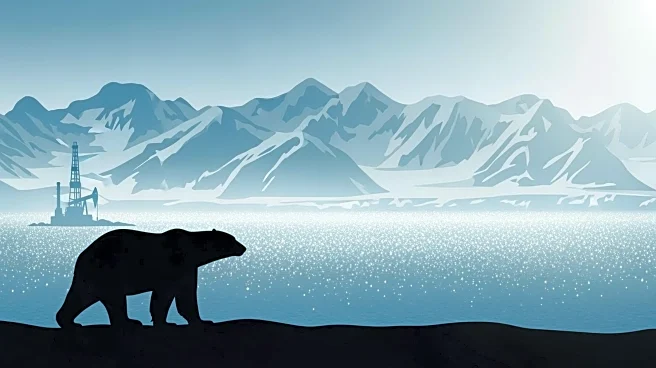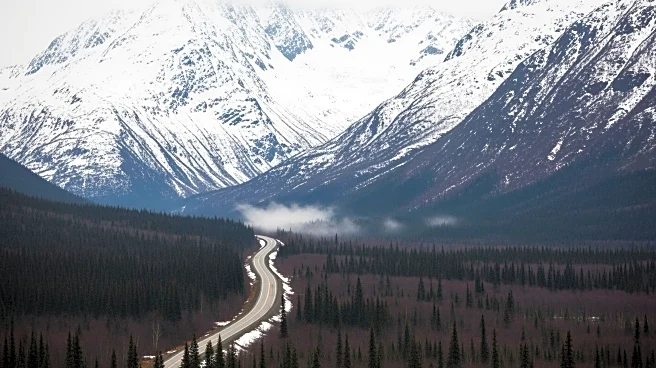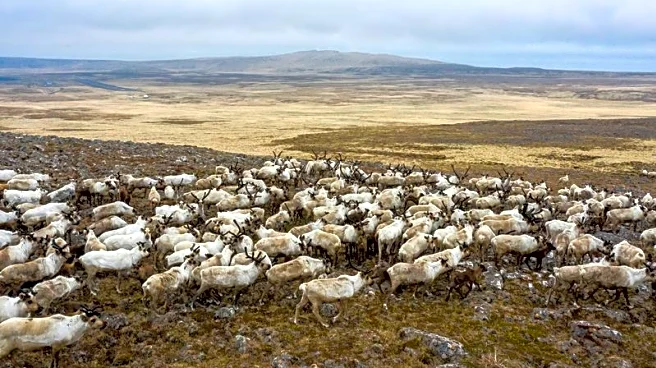What's Happening?
Interior Secretary Doug Burgum has announced a decision to open large areas of the Arctic National Wildlife Refuge for oil and gas drilling. This decision includes formal approvals for road-building projects
through protected areas such as the Izembek National Wildlife Refuge and Gates of the Arctic National Park. The department has transferred nearly 23,600 acres of public lands to the state of Alaska, facilitating the construction of the Ambler mining road, which will impact over sixty Alaska Native villages. The Arctic Refuge, known for its ecological significance and cultural importance to the Gwich’in people, is now open for oil and gas development, reversing previous protections.
Why It's Important?
The decision to open the Arctic National Wildlife Refuge to drilling has significant implications for environmental conservation and Indigenous rights. The refuge is home to diverse wildlife and ecosystems, and the Gwich’in people rely on it for their subsistence lifestyle. The move has been criticized by environmental groups like the Sierra Club, which argue that it prioritizes corporate interests over ecological preservation. The potential environmental damage could affect wildlife populations and disrupt fragile ecosystems, raising concerns about long-term impacts on Alaska's natural heritage.
What's Next?
Legal challenges are expected from conservationists and Indigenous groups opposing the decision. The Sierra Club has vowed to work with the Gwich’in and other Alaska Native communities to protect these landscapes. The controversy may lead to increased scrutiny and debate over federal land management policies and the balance between economic development and environmental protection.
Beyond the Headlines
The decision highlights ongoing tensions between federal land management and Indigenous rights. The Gwich’in people view the Arctic Refuge as sacred, and the decision to open it for drilling raises ethical questions about respecting Indigenous cultural values. Long-term shifts in U.S. environmental policy could be influenced by the outcome of legal challenges and public opinion on preserving natural landscapes.













